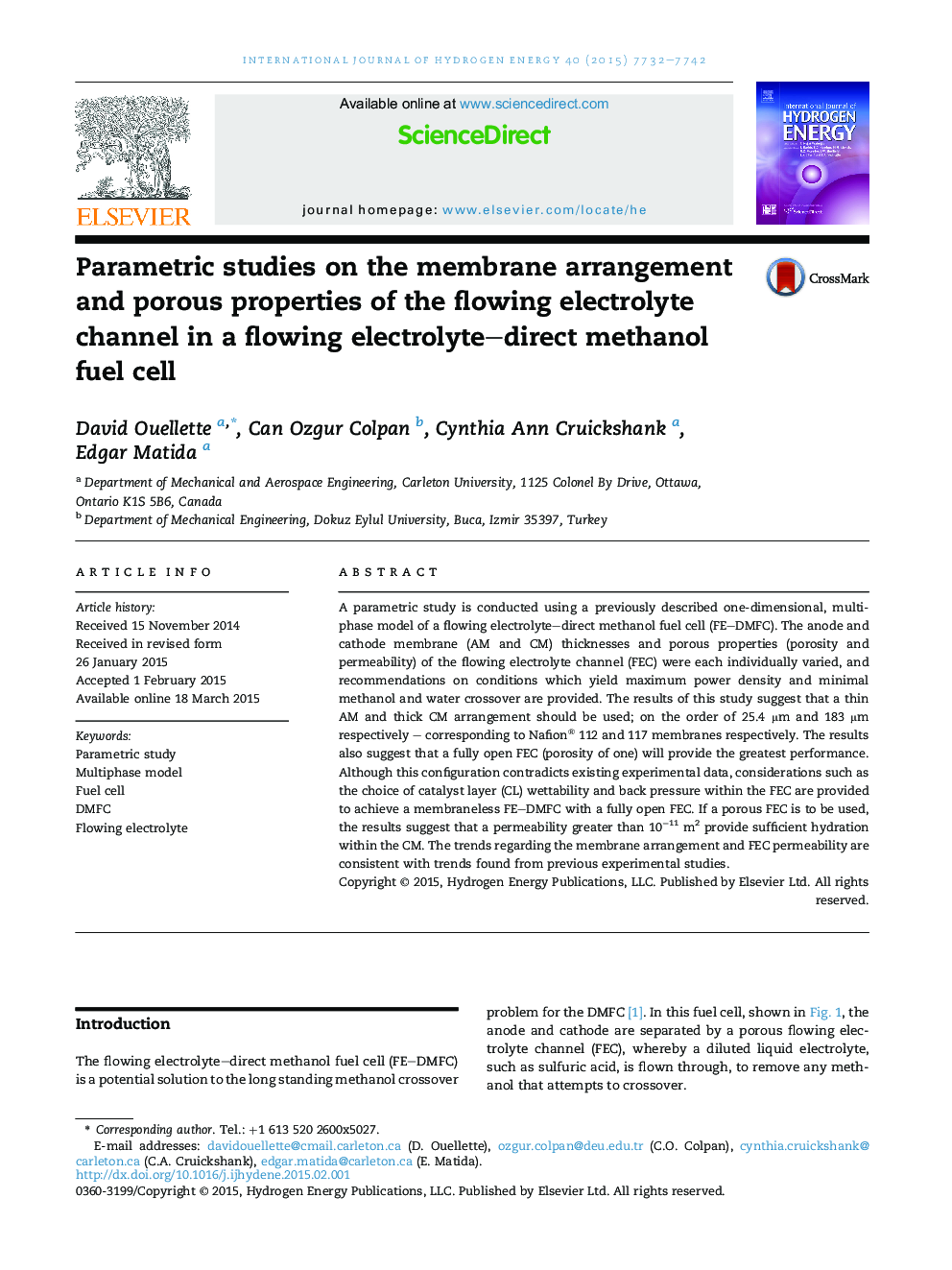| Article ID | Journal | Published Year | Pages | File Type |
|---|---|---|---|---|
| 1279748 | International Journal of Hydrogen Energy | 2015 | 11 Pages |
•Parametric study of FE-DMFC conducted, to maximize performance.•Thin anode and thick cathode membrane arrangement suggested.•Open flowing electrolyte channel (FEC) suggested.•FEC permeability greater than 10−11 m−2 suggested.•Design considerations for a membraneless FE-DMFC with open FEC provided.
A parametric study is conducted using a previously described one-dimensional, multiphase model of a flowing electrolyte–direct methanol fuel cell (FE–DMFC). The anode and cathode membrane (AM and CM) thicknesses and porous properties (porosity and permeability) of the flowing electrolyte channel (FEC) were each individually varied, and recommendations on conditions which yield maximum power density and minimal methanol and water crossover are provided. The results of this study suggest that a thin AM and thick CM arrangement should be used; on the order of 25.4 μm and 183 μm respectively – corresponding to Nafion® 112 and 117 membranes respectively. The results also suggest that a fully open FEC (porosity of one) will provide the greatest performance. Although this configuration contradicts existing experimental data, considerations such as the choice of catalyst layer (CL) wettability and back pressure within the FEC are provided to achieve a membraneless FE–DMFC with a fully open FEC. If a porous FEC is to be used, the results suggest that a permeability greater than 10−11 m2 provide sufficient hydration within the CM. The trends regarding the membrane arrangement and FEC permeability are consistent with trends found from previous experimental studies.
